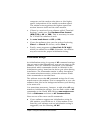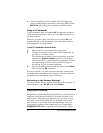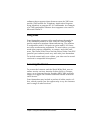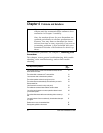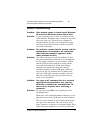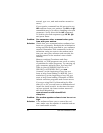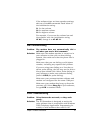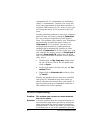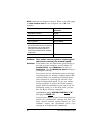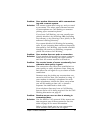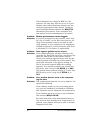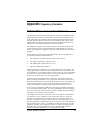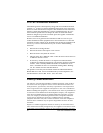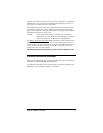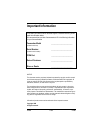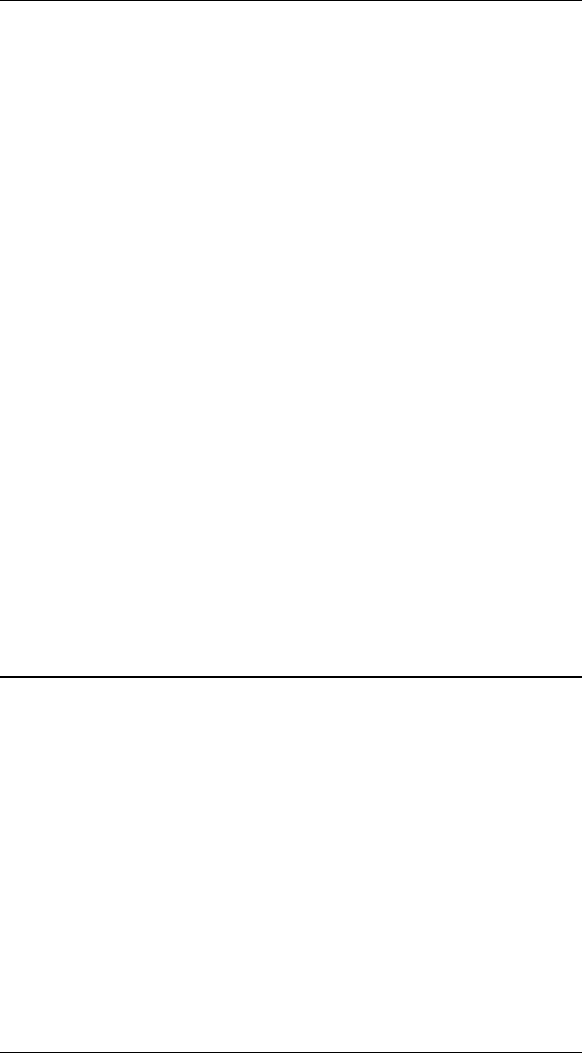
30 Quick Start and Reference Guide
FCC Part 15 Emissions Statement
All modems generate radio frequency energy and if not installed and used
properly, i.e., in strict accordance with these instructions, may cause inter-
ference to radio and television reception. This modem has been tested and
found to comply with the limits for a Class B Computing Device in accor-
dance with the specifications in Subpart B of Part 15 of the FCC Rules,
which are designed to provide reasonable protection against such interfer-
ence in a residential installation.
However, there is no guarantee that interference will not occur in a par-
ticular installation. If this equipment does cause interference to radio and
television reception, which can be determined by turning the equipment off
and on, try to correct the interference by one or more of the following
measures:
• Relocate the receiving antenna.
• Relocate the device with respect to the receiver.
• Move the device away from the receiver.
• Plug the device into a different outlet so that the device and receiver are
on different branch circuits.
• If necessary, consult the dealer or an experienced radio/television
technician for additional suggestions. The FCC has prepared a helpful
booklet, “How to Identify and Resolve Radio-TV Interference Prob-
lems,” available from the U.S. Government Printing Office, Washing-
ton, D.C. 20402, Stock # 004-000-00345-4.
The products covered by this statement include the 56K PCI Dualmode
Model 2925 and 1120, and are manufactured by Zoom Telephonics, Inc.
207 South Street, Boston, MA 02111, (617) 423-1072.
Industry Canada Attachment
The Industry Canada label identifies certified equipment. This certifica-
tion means that the equipment meets certain telecommunications net-
work protective, operational, and safety requirements. The department
does not guarantee the equipment will operate to the user’s satisfaction.
Before installing this equipment, users should ensure that it is permissible to
be connected to the facilities of the local telephone company. The equipment
must also be installed using an acceptable method of connection. In some
cases, the company’s inside wiring associated with a single line individual
service may be extended by means of a certified connector assembly
(telephone extension cord). The customer should be aware that compliance
with the above conditions may not prevent degradation of service in some
situations.
Repairs to certified equipment should be made by an authorized Cana-
dian maintenance facility designated by the supplier. For locations of the
authorized service facilities, please see the product’s warranty card. Any



